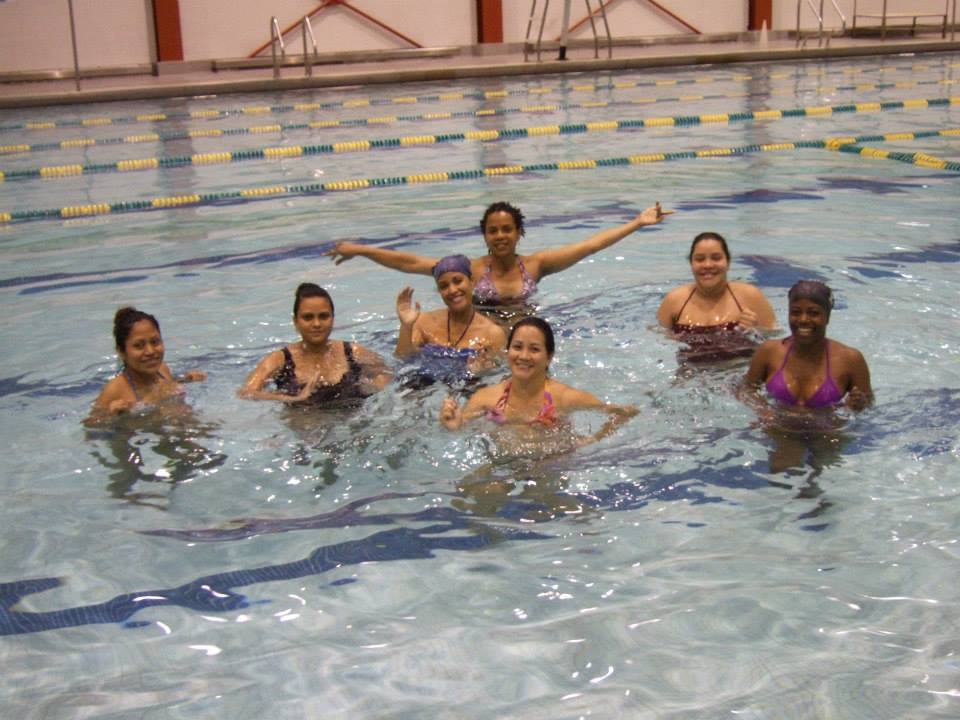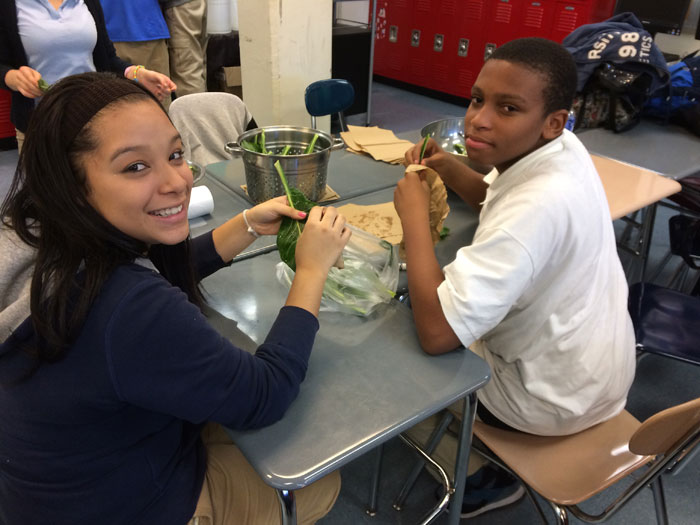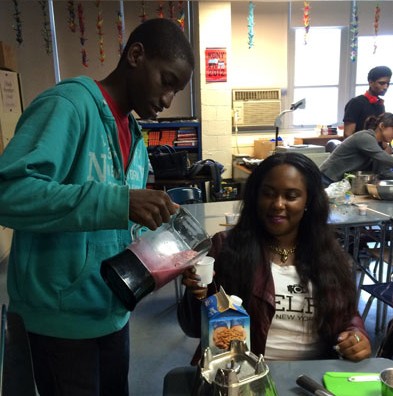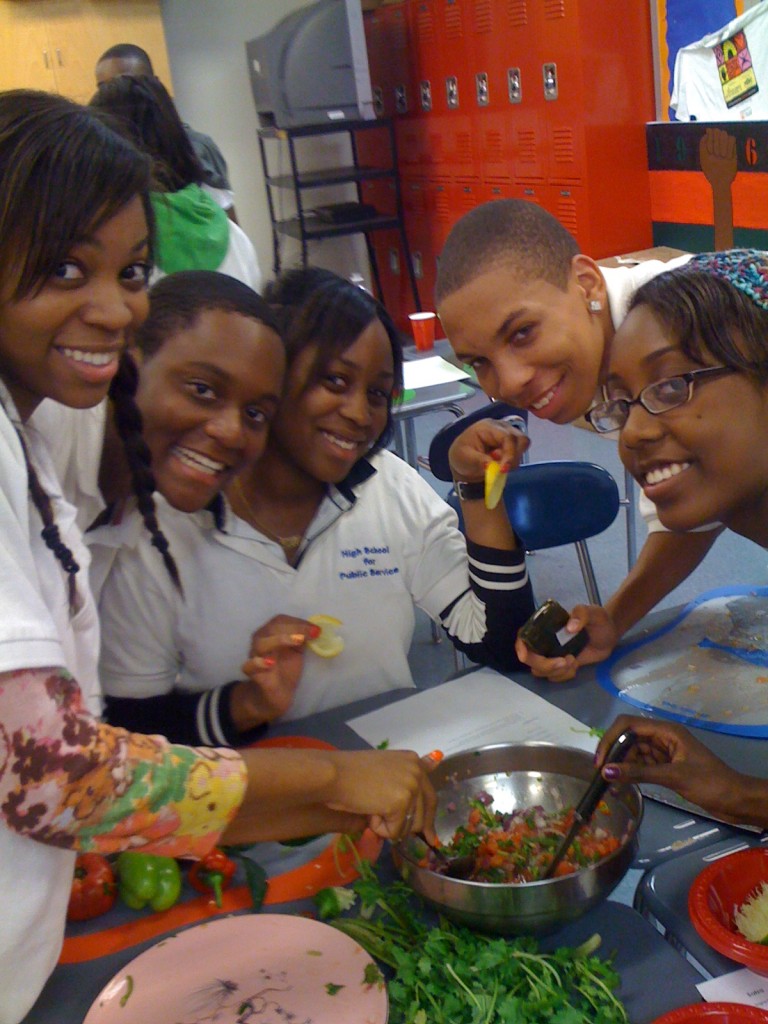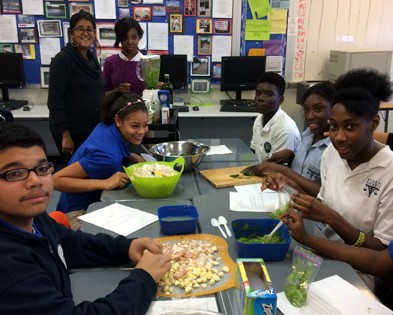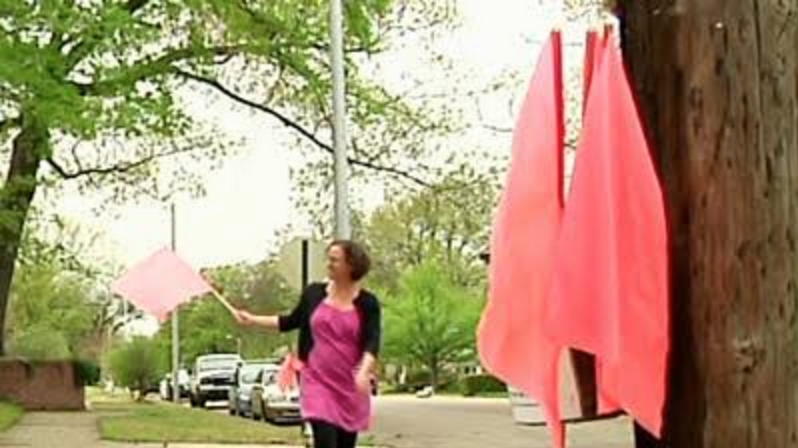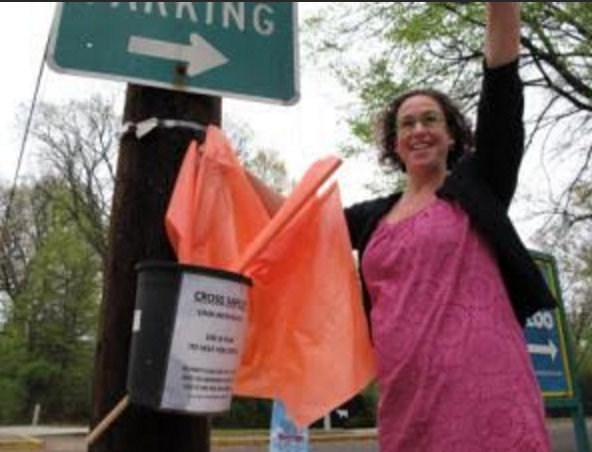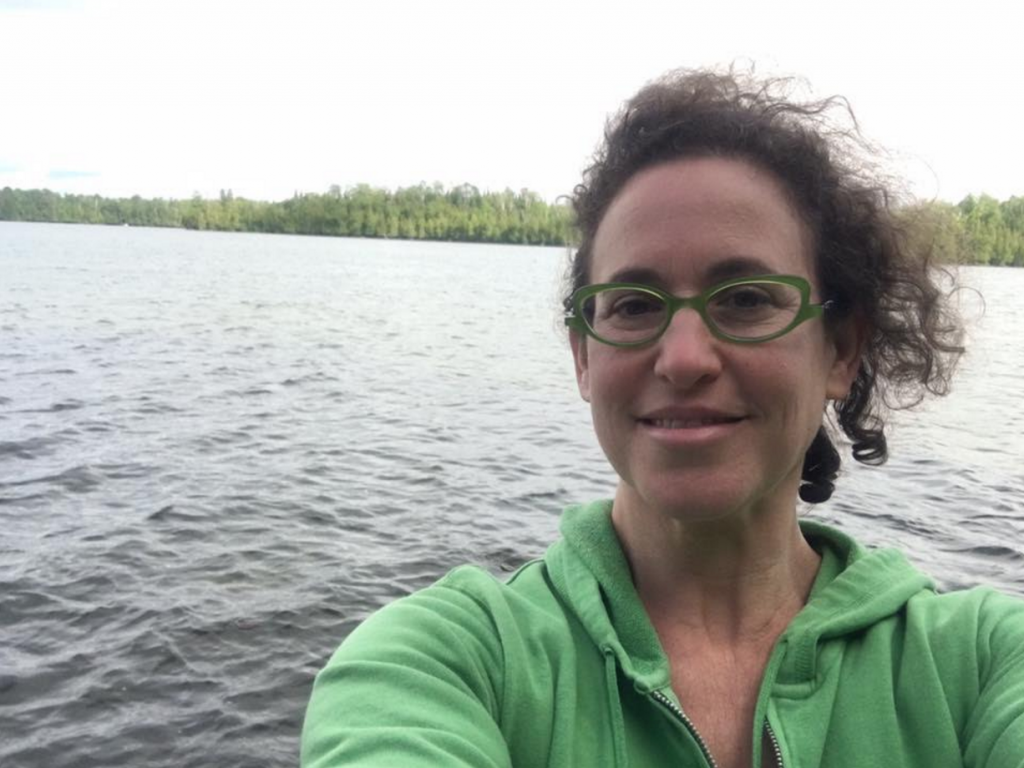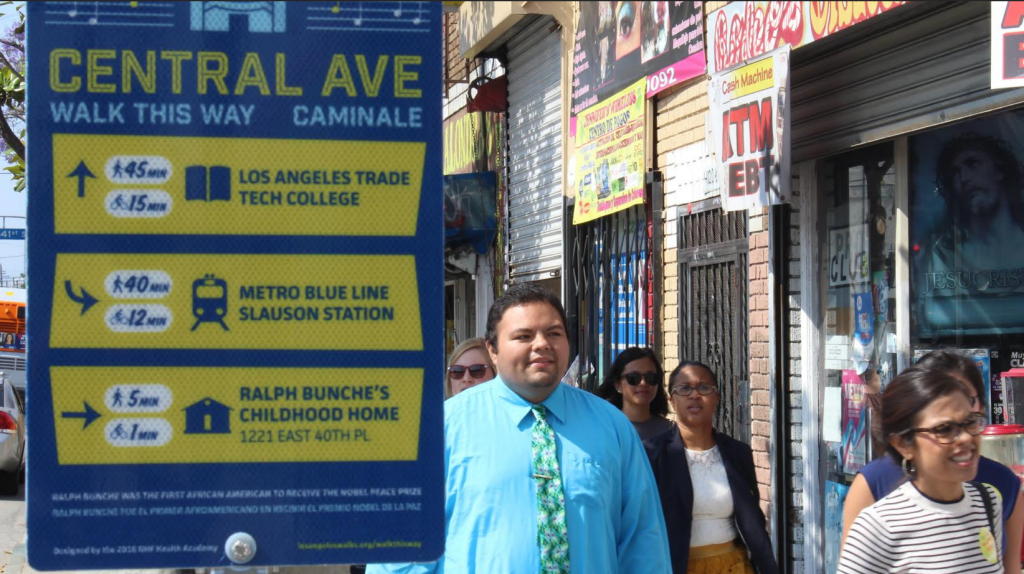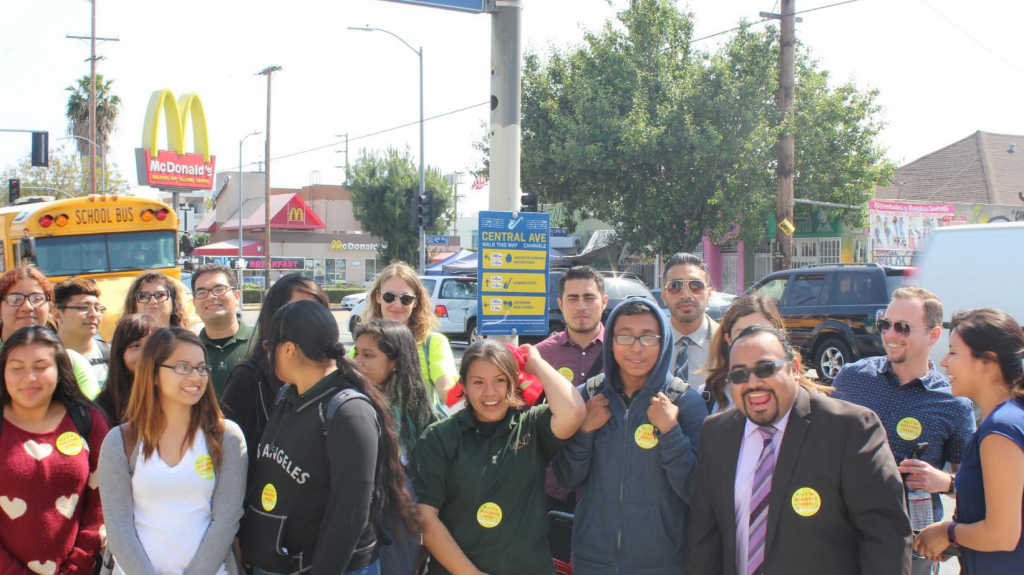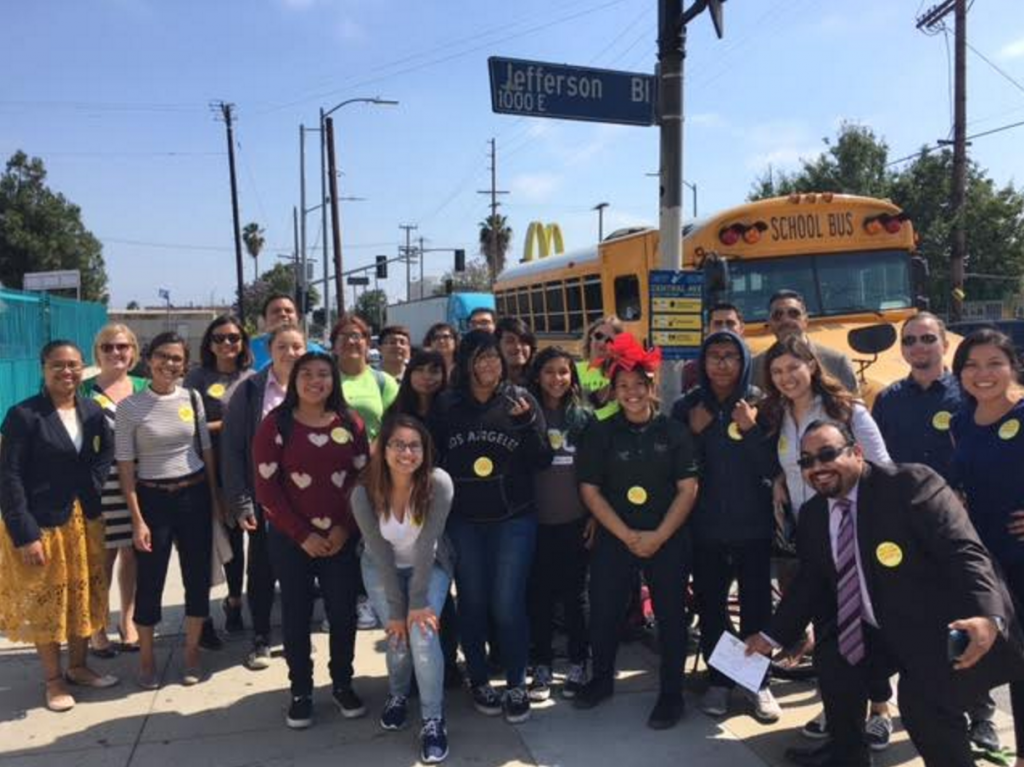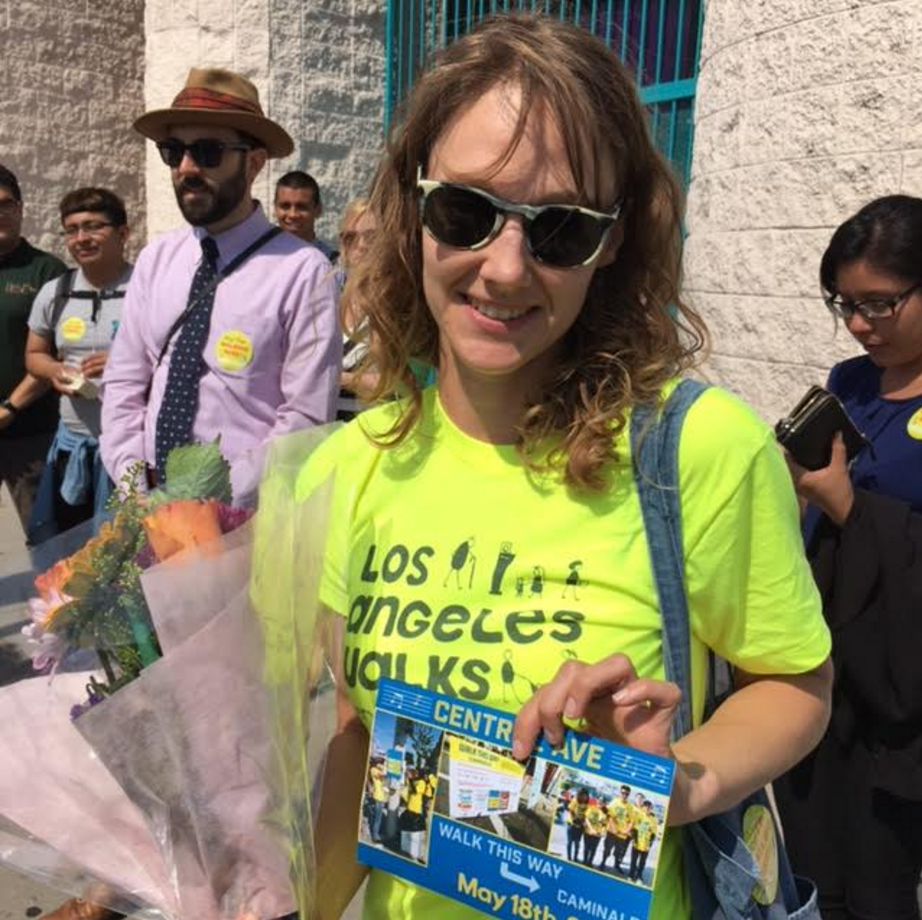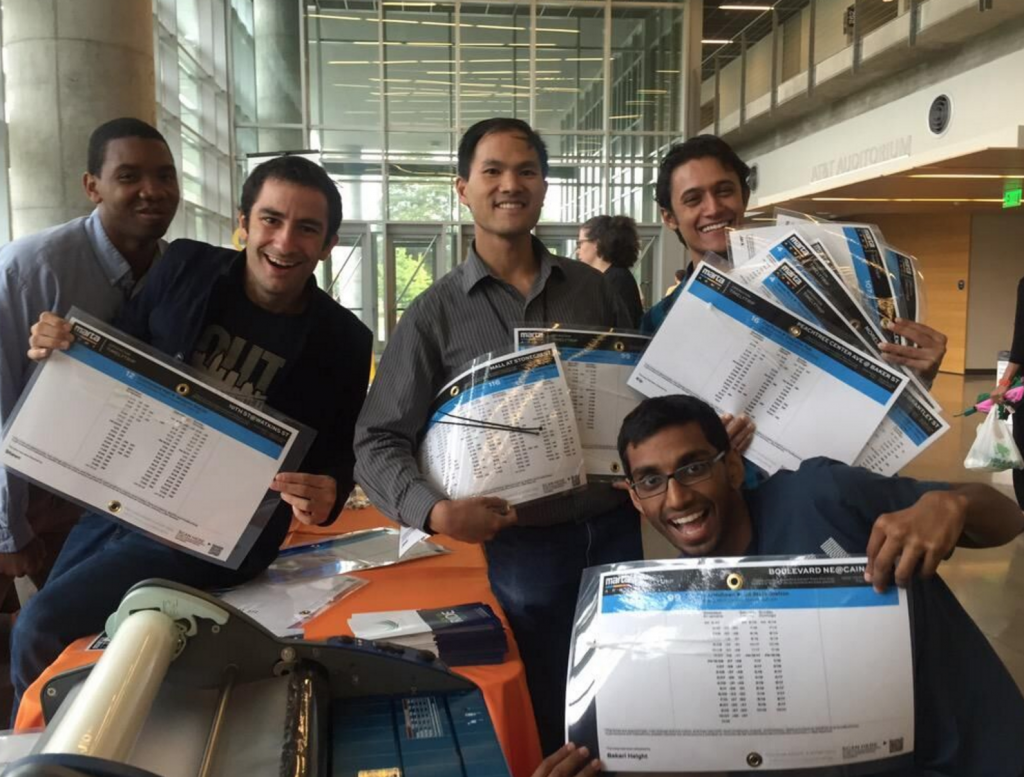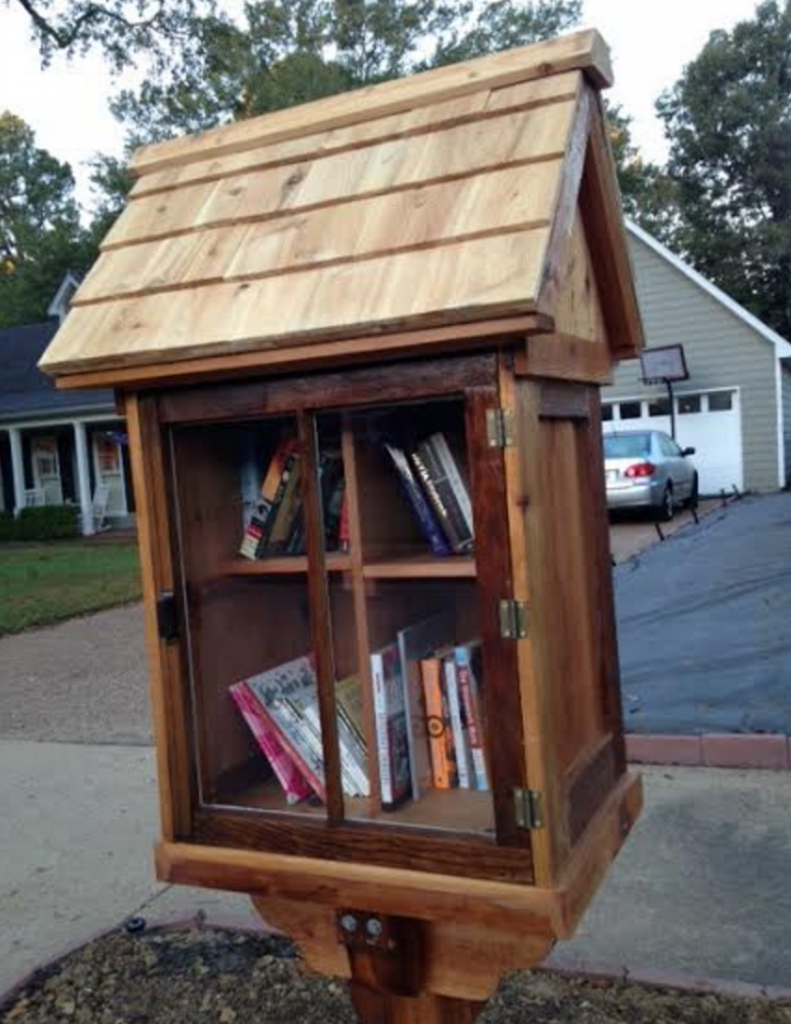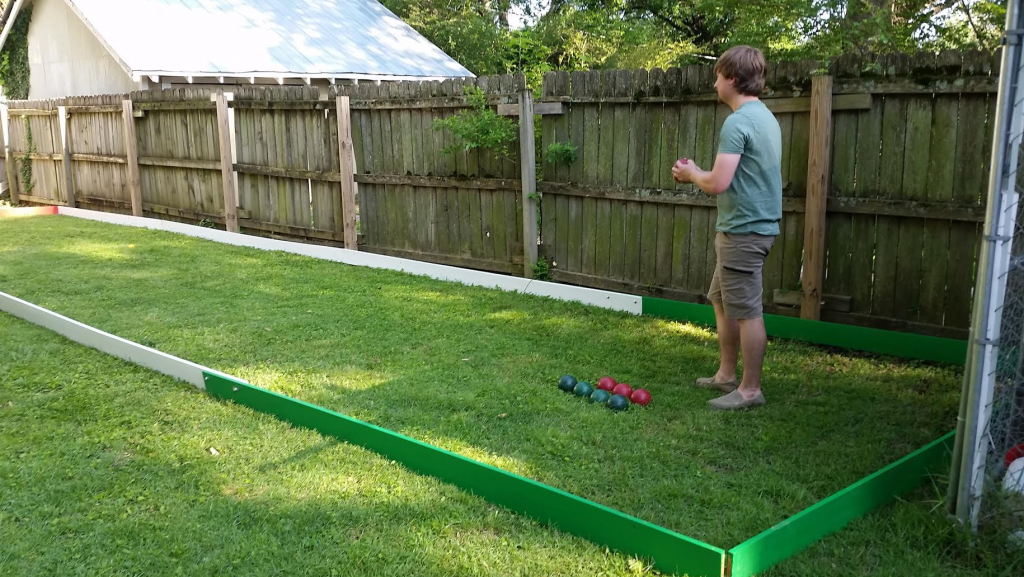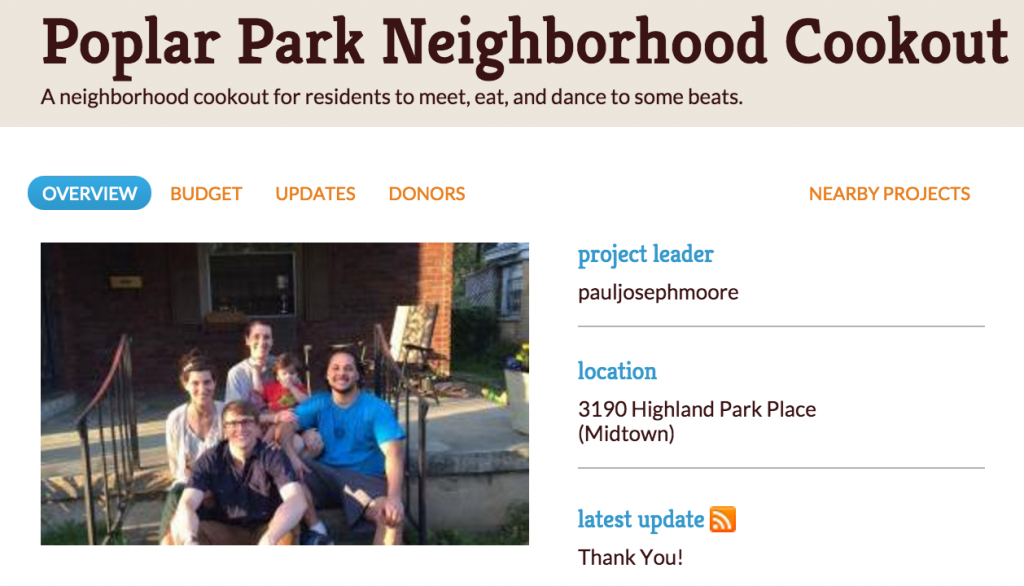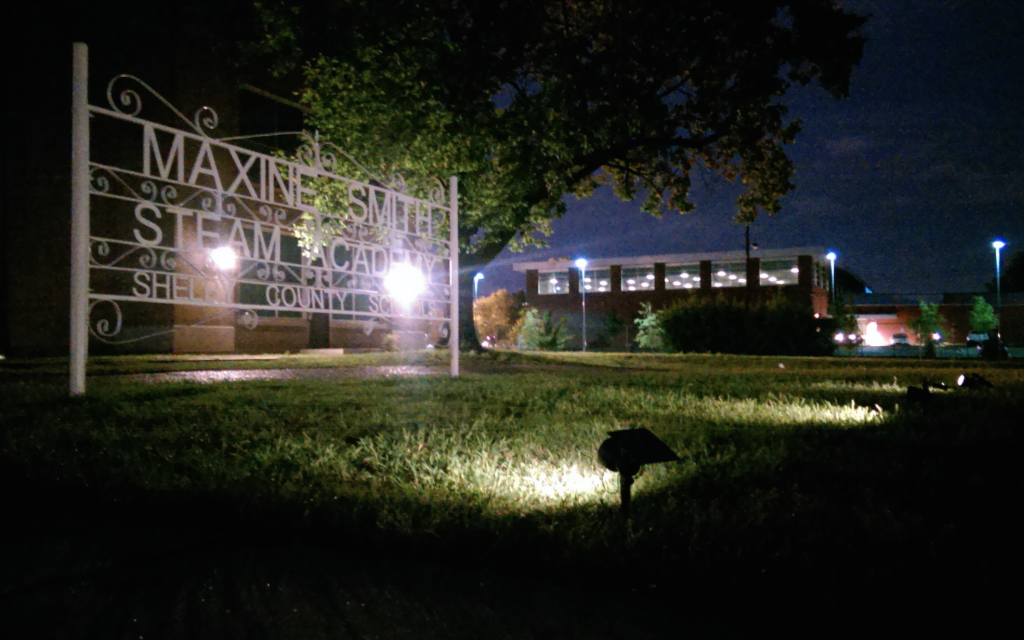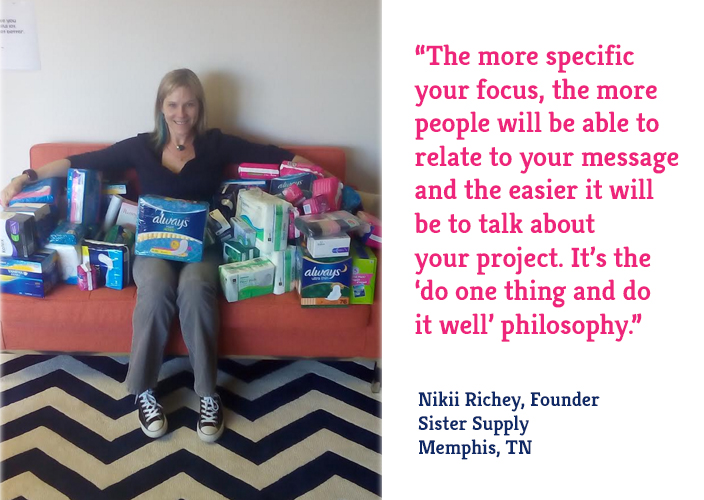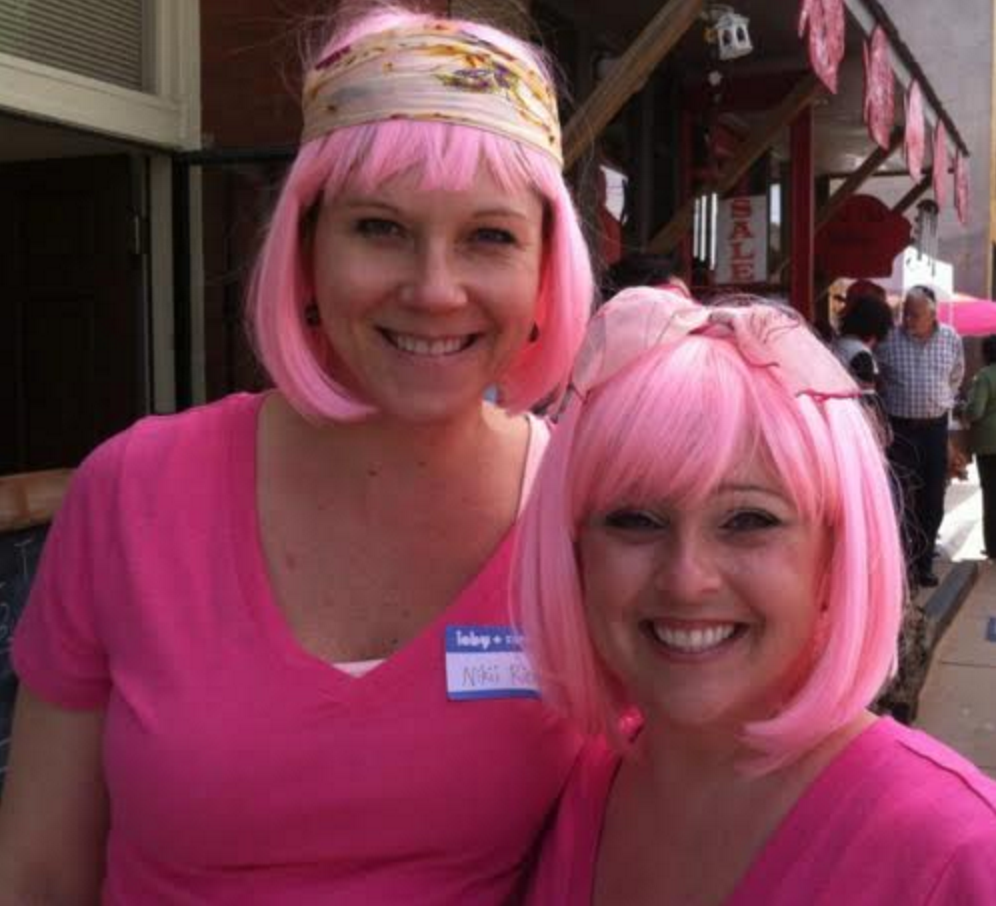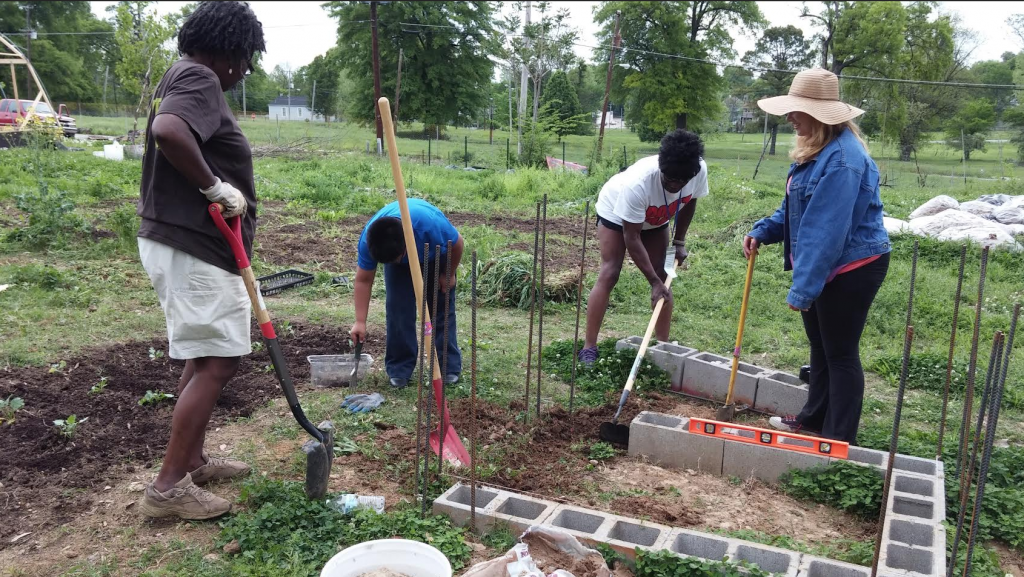Want to start your own project but need some inspiration? Our Learn from a Leader blog series is profiling past ioby Leaders who succeeded in bringing more fresh food, active transport, green spaces, and other healthy improvements to their neighborhoods. Read on, and imagine what you could do on your block!
About the project:
Chenchita’s Community Garden is a teaching community garden located in East Harlem, NYC. For well over a decade, its members have been growing delicious food and teaching their neighbors about urban farming, as well as hosting arts and crafts events, open mics, crocheting and knitting clubs, and more.
Last winter, the campaign to expand Chenchita’s Community Garden Farmer’s Market got underway. Their members used a combination of indoor seedlings they started themselves with flowers, herbs, and vegetables from GrowNYC’s Greenmarket Farmers Markets to offer affordable fresh food—with a side of horticultural education and locally-grown entertainment—to the surrounding community.

The steps:
- Determine your scope. What kind of market do you want to set up: just a farm stand with a few selections, or a full-on market? Do you want to sell only edibles, or also flowers and plants like groundcover? Is your intended audience people in a three-block radius, or would you like to bring in your whole neighborhood? How many garden members will be helping you organize the market (at Chenchita’s, we’ve had between three and five per season)? Answering these questions at the start will allow you plan your next moves.
- Start making connections. Unless your market will be teeny-tiny, you’ll probably need to get both farmers and volunteers on board to help stock and run it. Reach out to places like NYC Greenmarkets and Just Food to connect with farmers. The Youth Leadership Council can be a good place to find volunteers, as can NYCHA [New York City Housing Authority] resident associations—since NYCHA residents can earn community service hours for working in community gardens. This phase takes some researching and networking.
- Dig into the details—and look for discounts. We wanted to make sure our visitors could use EBT [Electronic Benefit Transfer: a card that allows shoppers to use food stamps to pay for purchases], so we had to get that set up. We wanted to make sure we had banners to advertise the market, and porta-potties for shoppers to use. We needed to make our water supply accessible to all our farmer-vendors, and ensure everyone had a tent and a table… The list goes on! Your farmers and any experienced volunteers can help you figure out everything you need. As you work your way through the list, remember to ask if you can get a nonprofit discount on any purchases—we got a free EBT setup and some money off our porta-potties because we specified that Chenchita’s is not a retail store.
- Offer extras for better attendance. We used our market as a chance to host cooking demos by Just Food and the NYC Department of Health. We gave composting workshops and gave away samples of herbs we grew. We offered puppet shows and “storytime” readings for kids and families. Not everyone will come around if you’re just throwing a farmers market—but they might if you advertise that some other fun things will be happening!
- Treat your people right. Since your volunteers will play a major role in your market’s success, don’t forget to show your gratitude. At Chenchita’s, we make sure to give our helpers a share of veggies as a thank-you gift, and we offer them other tokens whenever we can. People love useful items like plant pots and countertop compost cans—and things like that can also remind them of their community garden in the off-season!
Time/timing:
Farmers start setting up their market schedules for the coming summer in January, so get yourself organized in the fall so you can approach them before their plans are set. (Example: If you want to offer a farmers market in summer 2017, start organizing in fall 2016 so you can approach farmers during the winter and be ready to roll out by May or June.)
Budget:
This of course depends on the scope of your market (see step #1!), but many markets will need somewhere in the $5,000 range to get going.
Making a list of the things you need will help your budget come into focus. For example, a 10×10-foot tent could cost $400. If you want to become a member of the Farmers Market Federation of New York, that’s about $100. Printing a big vinyl banner could cost $150. Liability insurance could be $300…
When you’re budgeting, keep in mind that starting small and growing can be a great way to go. This allows you to learn from your mistakes before wasting too much time or money, and many farmers say they’d rather have a small market than a large one, since they get to know their customers better that way. Remember: Don’t judge your market by the quantity of its produce; judge it by the quality of interactions your visitors have with your farmers!
Additional resources:
- Just Food (their Farmers’ Market Network Manager, Nadia Johnson, was a particularly big help to us)
- NYC Parks GreenThumb (the largest community gardening program in the U.S.!)
- GrowNYC’s Greenmarket Farmers Markets
- Youth Leadership Council
- NYCHA community service info
- Getting EBT equipment for your farmers market
- NYC Department of Health cooking demos
- Farmers Market Federation of New York (they publish a guide to first-time farmers markets, and can help you network, understand your insurance needs, and much more
About the author:
Angela Maull—known to many as “the Goddess of Chenchita’s Community Garden”—is a Harlem native who’s been growing food there for over 15 years. She is also a certified master composter, beekeeper, garden designer, Trees New York-certified Citizen Pruner, and a member of the NYC Community Garden Coalition and the greenNYCHA Garden & Greening Program—just to name a few.

Feeling inspired? Want to take action in YOUR neighborhood? If you have awesome ideas about how to make your town greener, safer, and more fun, let us help! Tell us your awesome idea right here. We’d love to help you get started today.
